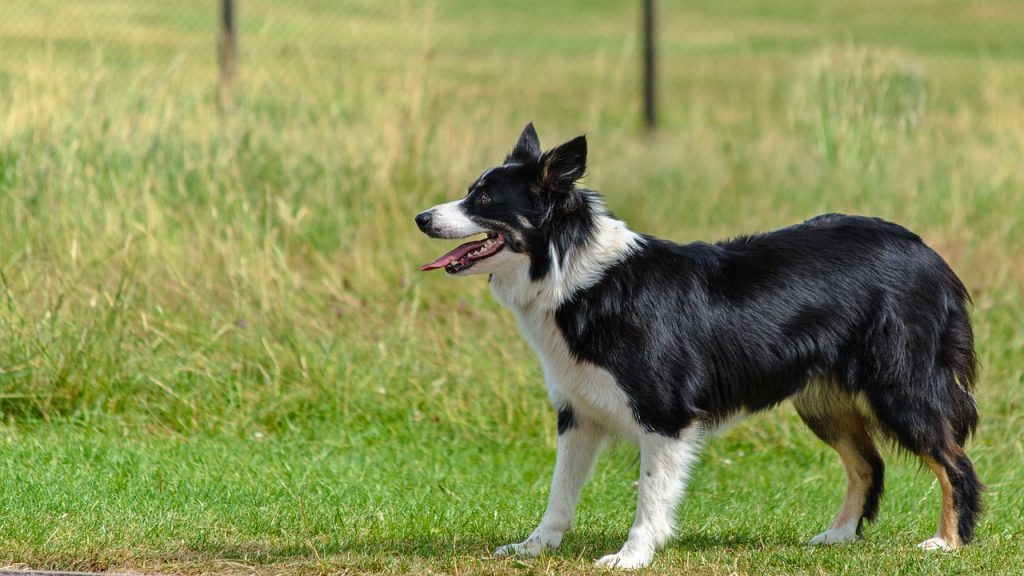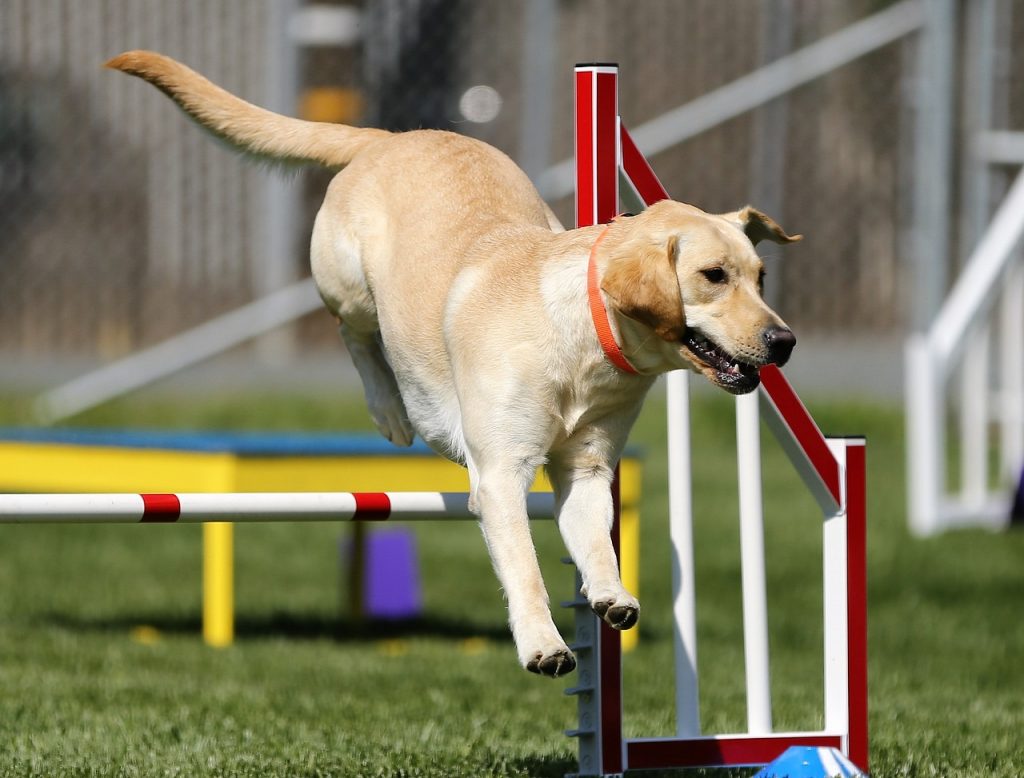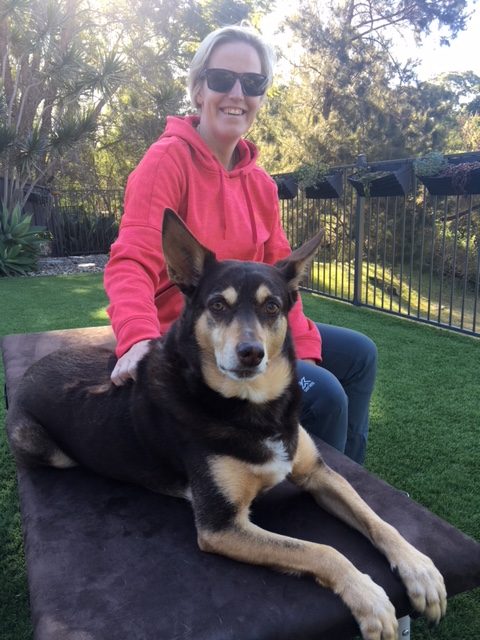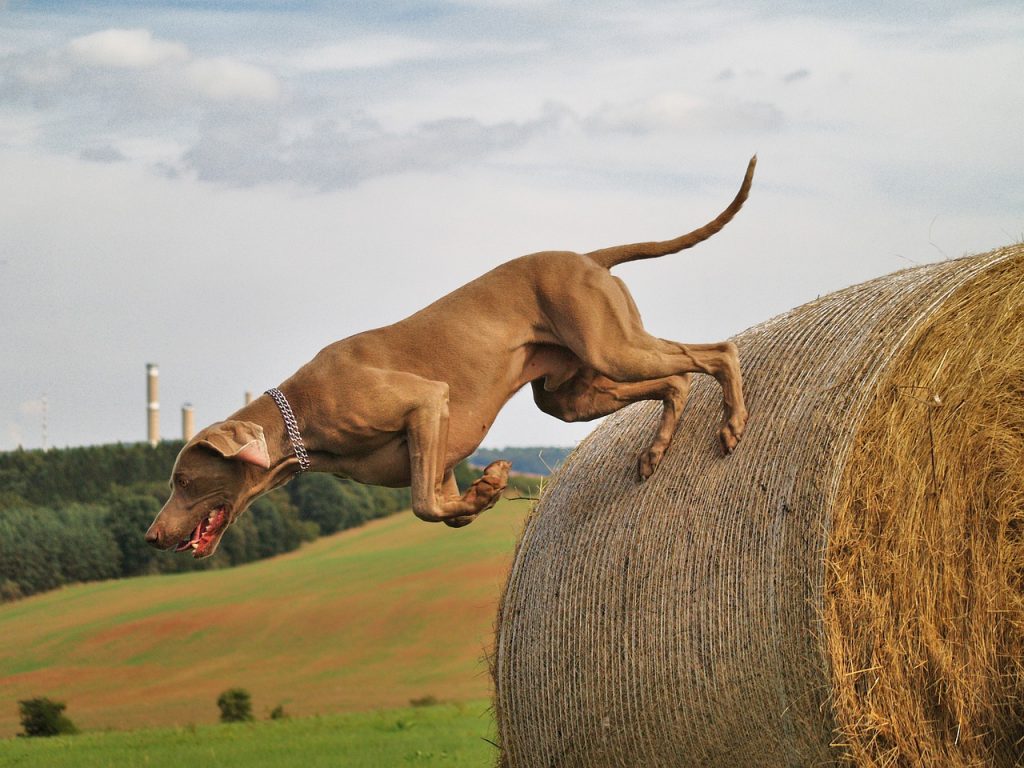Soft tissue injuries of the shoulder are a common cause of front limb lameness in dogs. The more recognized shoulder injuries include biceps and supraspinatus injuries, as well as medial shoulder instability. The frequency of triceps injuries is, however, becoming more common in dogs, especially sporting dogs like those participating in agility.
Whether these injuries are occurring more often, or vets and canine rehabilitation professionals are becoming better at diagnosing soft tissue injuries in dogs, remains to be seen.
The Triceps Muscle in Dogs
The triceps muscle is located on the posterior surface of the upper arm. In dogs, it consists of four heads (long, lateral, medial and accessory heads), with a common insertion into the point of the elbow (olecranon). The main function of the triceps muscle is the extend (straighten) the elbow. The long head of the triceps muscle also crosses the shoulder joint to flex the shoulder.

Why Does the Triceps Matter?
While all muscles are important and play their role, the triceps muscle is joining the ranks of the rotator cuff muscles and biceps as an important, but sometimes injured muscle in dogs. The emergence of triceps strain as an important differential diagnosis in front limb lameness, is primarily due to the function of the triceps muscle as a weight bearing muscle in dogs (as opposed to humans).
In a normal standing posture, a dogs elbow is maintained in an extended position by isometric contraction of the triceps muscle. An isometric contraction is when the tension is maintained in the muscle without actually shortening the muscle. The triceps works against gravity and the resistance provided by the dog’s weight, which wants to flex or bend the elbow.

The role of the triceps muscle is more important when a dog is running or jumping, as their triceps resists both gravity and body weight. This is especially true downhill, or on activities like weaves.
If you want to understand how important the triceps muscle is, try holding the top of the press up position. Now imagine if you had to add claps and catch your body weight each time (please don’t break yourself trying this). This is basically how the triceps functions for a dog each time they land from a jump.
Triceps Injury in Dogs
Muscle strains are the most frequent injury in human sports, producing a range of injuries from tearing a few muscle fibers with pain and local spasm, to complete muscle rupture or avulsion from the insertion (where the muscle attaches to the bone). While triceps muscle rupture / avulsion in dogs is rare, it can occur. More commonly however, the triceps muscle is affected by strain injuries.
A triceps strain is when a triceps muscle/tendon is damaged. It is graded according to the number of fibres damaged:
- Grade 1: Muscle fibres stretched, no tears
- Grade 2: Some muscle fibres torn
- Grade 3: Complete tear / all muscle fibres torn
An acute strain can occur when the muscle is “overstretched”.
Common Causes of Triceps Strain:
Any dog can injure their triceps muscle, but the nature of the sport means that agility dogs are at greater risk.
Activities that may lead to triceps strain include:
- Losing footing while landing from a jump
- Repetitive concussive activities like landing from jumps or running down hill
- Weaving on slippery / wet ground
- Taking too much speed into the weave entry
- Slipping in tunnels, either due to slippery surfaces or poor tunnel fixation (excessive tunnel movement)
- Inadequate warm up – going straight into jumping. Remember the triceps muscle is really important when landing from a jump

Symptoms of Triceps Strain:
While obvious lameness will present in more serious injuries, in mild cases you may only see:
- Shortening of the stride, with the front leg of the dog not fully extending. This will be more obvious at faster speeds, weaving, and landing from jumps
- You may also note that the dog drops into flexion of the elbow when landing or walking downhill
- Refusal to jump or weave
- Stiffness in the front limb when getting up from rest
Diagnosis of Triceps Strain:
Direct palpation of the triceps muscle typically results in marked discomfort and will confirm this diagnosis. Lengthening the triceps muscle by bending the front limb (elbow flexion) will often reproduce pain. If the long head of the triceps muscle is also involved, concurrent shoulder extension will reproduce pain.
While physical examination findings are generally diagnostic, additional scans such as x-ray, ultrasound, or MRI may be beneficial, especially if the diagnosis is not clear cut. Scans may also be important if your dog is not responding to conservative therapy. Scans will helps rule out front limb lameness due to neck, elbow, and / or shoulder pathology.
Treatment of Triceps Strain:
Early detection and treatment are important in the management of triceps strain in dogs. Depending on the severity of the injury, your dog may need several weeks to months of strict rest to prevent re-injury (grade 3 will require surgery). This means no jumping, playing, or running, with leashed toilet breaks only.
Manual therapy with stretching and massage can also be pursued from an early stage. Laser therapy or acupuncture may also be beneficial.
Having completed the strict rest, leashed walks and hydrotherapy (underwater treadmill) can slowly be introduced. No concussive activities, like jumping and playing, are allowed until later in the rehabilitation. It is important that you talk to your Vet and /or seek out a Canine Rehabilitation Professional to design a rehabilitation program for return to activity.
If you would like to learn more about shoulder injuries in dogs, click here. Alternatively, this article also goes into more detail about the treatment of shoulder injuries (the information can be applied to triceps strains).


